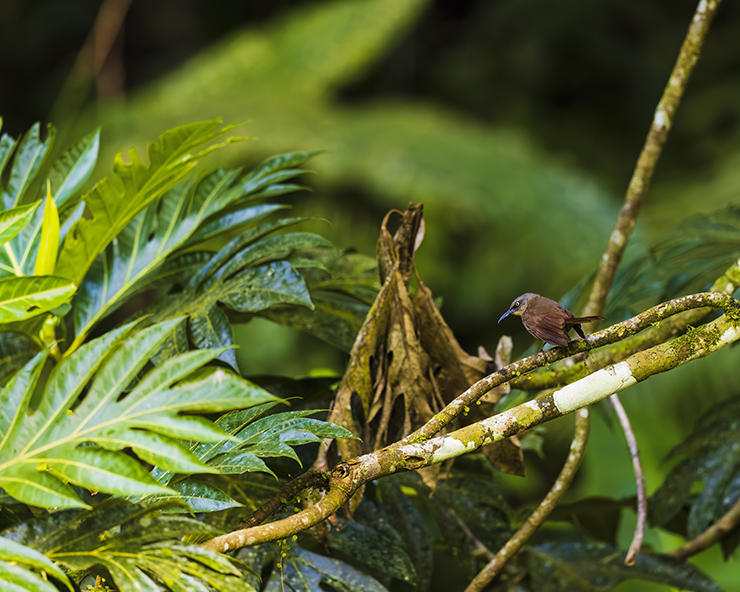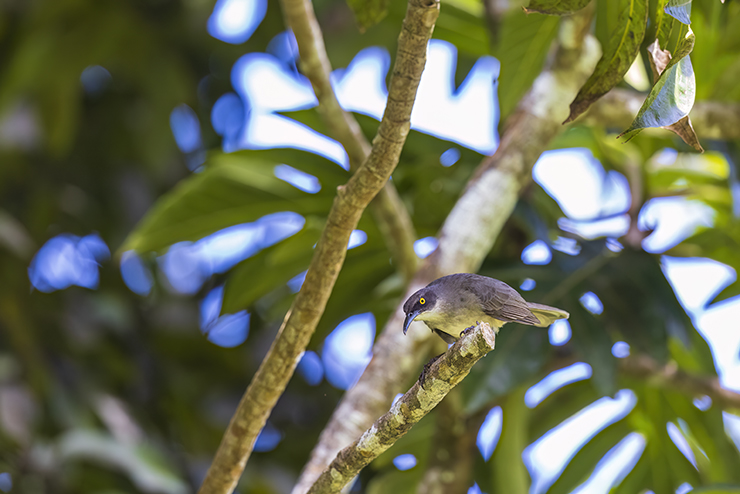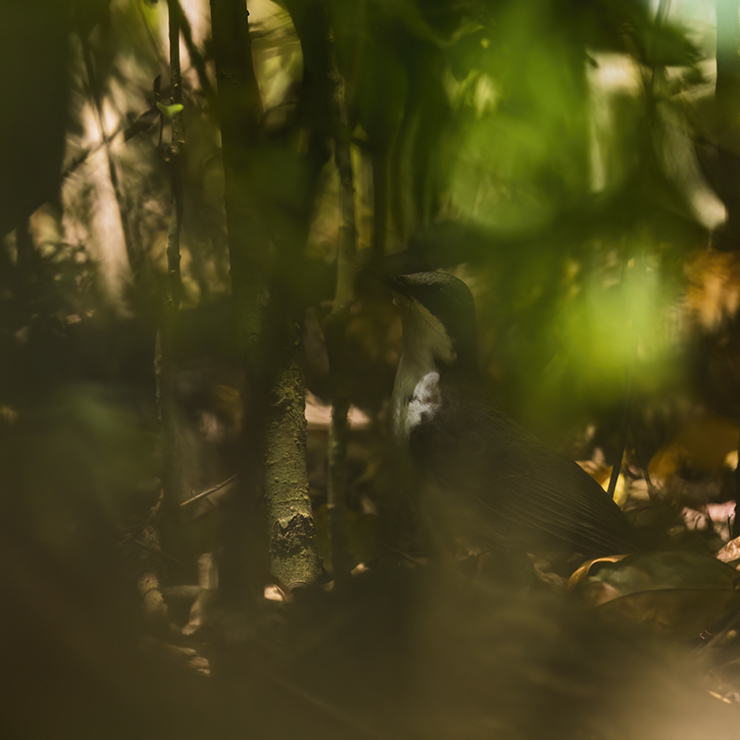
The tiny islands of the southern Caribbean are much more famous for sprawling white sand beaches and azure water as they are for birds; but there are several regional endemics that thoroughly stir the imagination. Some entire family groups are unique to the region, this holds true for the genus Cinclocerthia – tremblers.
Comprising two species, these mimids are as full of charisma as many of the more familiar mockingbirds, catbirds, and thrashers. However, they are distinct in many ways. Both species seem near-mythical, birds that almost encourage the viewer to follow them as they interact with their habitat. They conjure extrapolated images of the montane forest they call home as they fly unafraid into surrounding trees, pausing briefly after landing on moss-laden branches to – you guessed it – tremble.
The name “trembler” is a direct result of this habit, in which the bird cocks its tail, holds its wings slightly away from its body and vibrates them in various directions. The bird’s body itself does no trembling, but this peculiar habit has clearly captivated ornithologists enough for them to ascribe the bird’s existence to this rhythmic vibration.
Both species of trembler are relatively sedentary, and seem content to occupy their habitat without the desire to roam or wander. For the Gray Trembler this habitat is moist montane forest on only two islands: St. Lucia and Martinique. Interestingly, they are also found in some of the drier areas but in decidedly less density. Perhaps this is due to the presence of the closely related White-breasted Thrasher (which, coincidentally, is also found only on these two islands) in the lower elevation scrub and dry forest.

Gray Trembler

A White-breasted Thrasher rummages among leaf litter in extremely dense dry forest in Martinique.
Another interesting point to note is that both Gray Trembler and White-breasted Thrasher each have two subspecies, one for each of the two islands they inhabit. To add even more to the lore of the trembler, an old skin discovered in the World Museum previously attributed to an extinct starling from Madagascar called the Mascarene Starling or Necropsar leugati was more recently revealed to be – you guessed it – a Gray Trembler. The specimen was albinistic or lacking pigment; which undoubtedly aided in its misidentification.
Now, islands both to the north and south of St. Lucia and Martinique host resident populations of the Brown Trembler. Yet, both species are not known to coexist on the same island. Reports of Brown Tremblers from St. Lucia are presumably misidentified Grays, as far as we know for now. Although both species are relatively common on their respective islands, much still needs to be known about their individual life history. After all this time, only a single nest of a Brown Trembler has ever been described.

Brown Trembler, trembling. Note the tail and wing position!
Many gaps are still in dire need of being bridged in our understanding of these birds within the Caribbean. Some organisations and isolated pockets of concerned citizens are trying their best, but there is still much room for improvement. Caribbean governments are notorious for their weakness for wanton destruction of the natural environment in the name of large-scale development, and without suitable attention and therefore importance placed on these species, they are very likely to be bulldozed out of existence. As birders we can do our part by simply enjoying the presence of these amazing birds! After all, what’s not to love about birding in a place where the beach is always a short drive away?



 New writers welcome – please contact us for details.
New writers welcome – please contact us for details.

















Leave a Comment